A Temperature Project SAL…
…For Everyone Who Has Never Actually Finished a Temperature Blanket or Scarf
My team and I have shared many ideas with you over the years about how to crochet a temperature blanket or other similar temperature projects. We’ve discussed choosing a pattern, figuring out the temperatures, picking the right yarn, and more. We’ve even talked about taking the idea of a temperature blanket and using it to track habits instead. Like many of you, I think the concept of a temperature blanket is terrific. But I HAVE A CONFESSION. I have never actually finished a temperature blanket before. That’s why we thought a temperature project SAL was the perfect idea to urge you all to actually complete something!
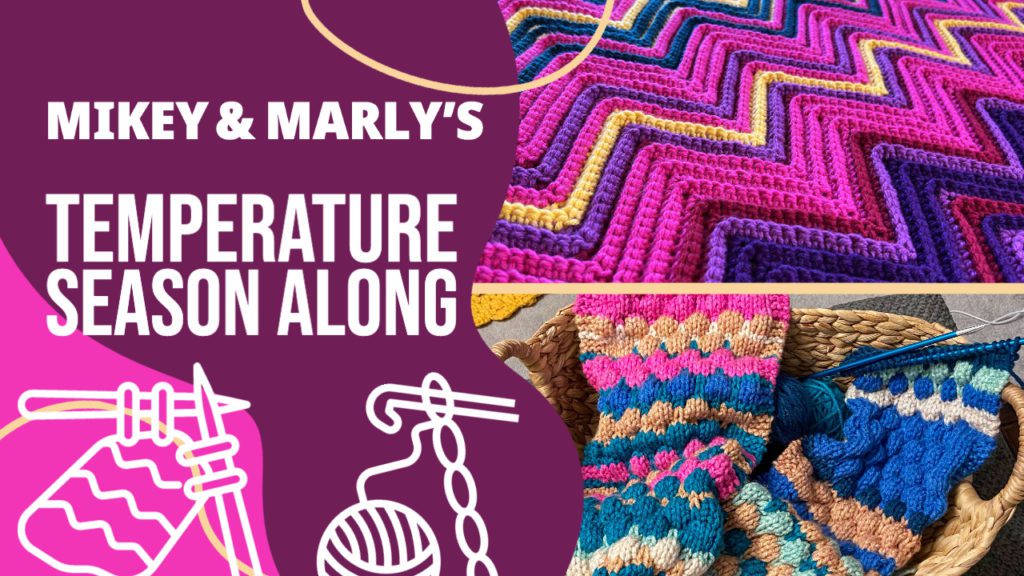

I know I’m not alone. I checked with my team, and Kathryn, Robyn, and Cryssi haven’t ever finished one either! So, I’m thrilled to let you know that I’m joining forces with Mikey of The Crochet Crowd for a make-along that turns the usual temperature blanket project on its head and makes it a doable bite-sized project that we can all do together.
Why Don’t People Finish Knit or Crochet Temperature Blankets?
As Mikey points out in his post, there are so many reasons that people don’t finish temperature blankets. We all love the idea. That’s why the posts about them go viral in January. But just like every diet and exercise plan that’s over by February, most temperature blankets sit there unfinished.
A Year Is Too Long For One Project
For me, it’s just too daunting to think about starting a project that’s supposed to go on for an entire year. I don’t have the time for that. And I lose interest over those twelve months. I do like long projects where I get a great finished item at the end, but a year is just way too long. Even though we’ve talked about how to stay in love with your blanket for a whole year, it really is just too long for most of us.
That’s why what Mikey and I have in mind is a temperature project SAL that still tracks a nice chunk of time in the same way but for not nearly as long. It’ll be meaty and have a great end product, but it also has a shorter time limit. That’s much more manageable and appealing. We’ll have more details for you in a few weeks, but a single season sounds like just the perfect amount of time.
Celebrating And Counting Down
One of the twists on temperature blankets I love is choosing a specific time period that means a lot to you. You might track the temperature during the baby’s first three months or throughout pregnancy or use the blanket to count down the days until school starts or the holidays are here. For the temperature project SAL I’m working on, the season will include some of the most important dates in my life, which all come in the last few months of the year. John Bird decided he wanted to marry me during those months and we did get married on December 22nd. We also discovered we were pregnant with our daughter Ally during those months. So every year, those are special months for me. It’s motivating to work on a project that celebrates those memories. I used Weather Underground to find the temperatures from those past important years!
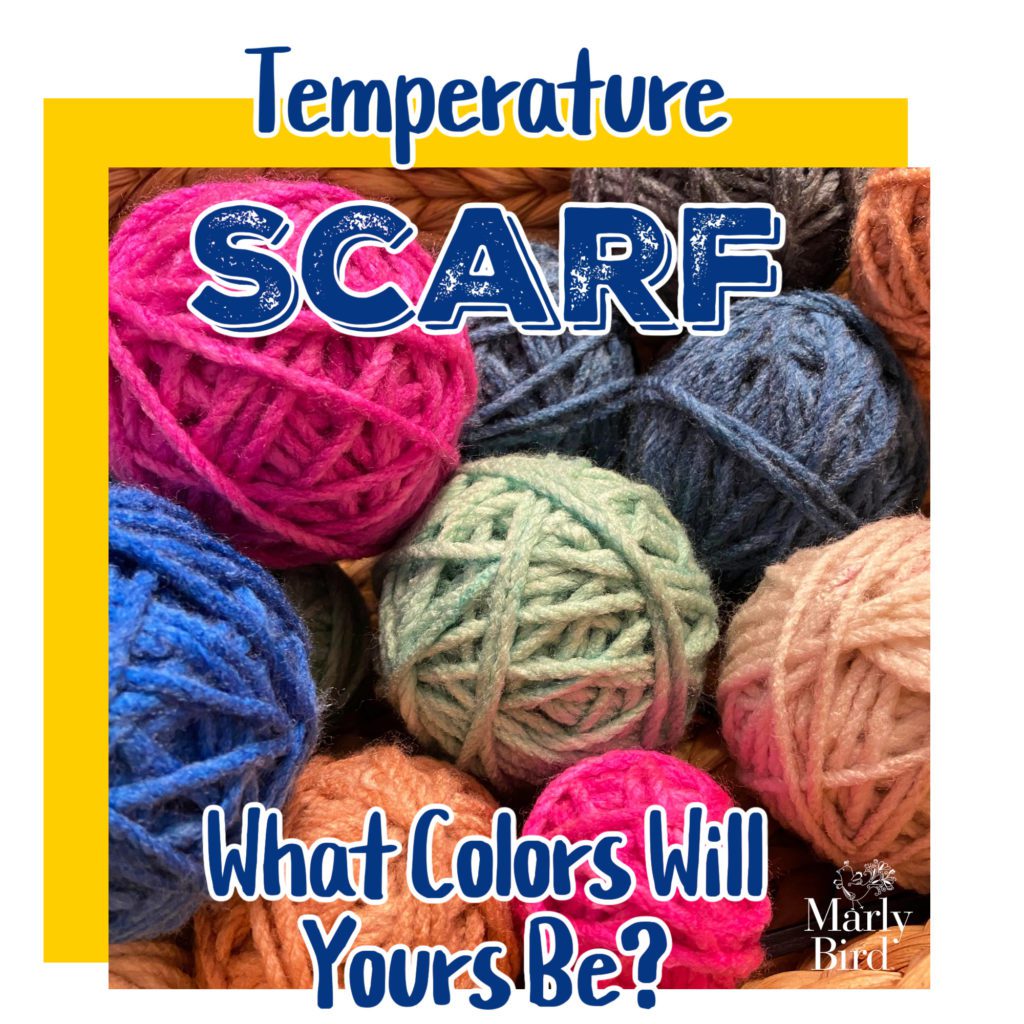

Other Reasons People Don’t Finish Temperature Blankets
Here are some of the other common reasons that people rarely finish their temperature blankets and some solutions I’ve found over the years:
The original blanket asks you to crochet daily.
You end up with 365 rows, which is a HUGE blanket. And you can fall behind so fast. The season-long temperature project SAL is one solution. Alternatively, you can crochet just once per week or even one square per month.
The original blanket design was single crochet only.
While that can be meditative, I know that I immediately get bored at the idea of working one single crochet row every day. That’s why we’re totally changing it up for both crocheters and knitters. We’ve also previously published other temperature blanket patterns for different ideas. And we’ve shared some other crochet stitches to use.
Some areas don’t have big temperature changes.
As a result, you get a blanket that’s mostly the same color throughout the year. We’ll be addressing how to deal with this in the stitch-along. We’ve also talked previously about choosing your time period. Alternatives to year-long projects include tracking the school year, a single birthday month, or a holiday or special occasion countdown. But you can also tweak how you assign the colors to temperatures, which we will share with you, too.
It’s all about rainbows.
There’s nothing wrong with rainbows, of course. But most original temperature blankets use the ROYGBIV color palette, and we don’t all want to work with that. So, Mikey has devised a unique new color strategy for these projects. We’ve discussed choosing colors for temperature blankets before, and I’m adapting that with his color strategy. I know which yarn I have in mind and think it will be perfect.
Too many ends to weave in.
If you’ve followed me for long, you know I DO NOT CROCHET or KNIT OVER MY ENDS! I take the time to weave in all my tails. Well, with an ever-changing temperature blanket or scarf, that can mean a LOT of ends to weave in, and sometimes people just don’t want to deal with that.
It’s More Fun to Stitch Along (SAL) Projects in a Community
I haven’t finished a temperature blanket, and I know I never will in the traditional way. Some people love to set up an ambitious project like that and do it week to week by themselves. I’m not one of those people. I get distracted by other things.
The whole doing it alone thing, accountable only to yourself, is a big part of the problem for many people. Sure, everyone starts sharing their ideas for temperature blankets in January. However, it tapers off quickly. You aren’t generally all working together, so nobody ends up paying attention.
That’s why we think a temperature project SAL season-along is a better idea. It’s more motivating to consider joining a group each week to build upon the work you’ve done in the previous weeks. And yes, it will be a season stitch-along because temperature projects aren’t just for crocheters.
What Will We Make In This Temperature Project SAL?
Mikey designed a crochet blanket that is just beautiful. He went with non-traditional colors in a chevron stitch pattern that keeps the crocheter interested AND is absolutely stunning.
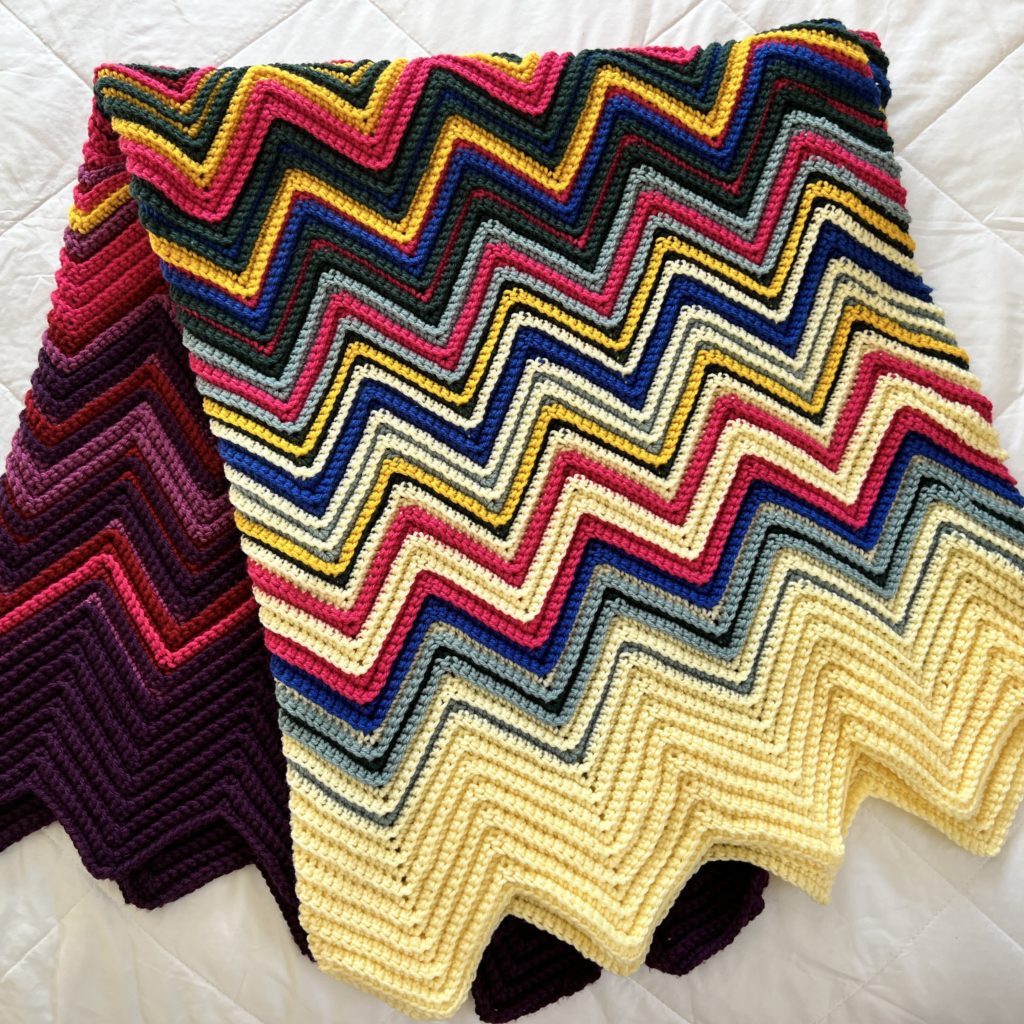

Like most knitters, I’m not interested in knitting a blanket, so I designed a knit temperature scarf with bulky yarn! This means the project is quick, low time commitment, and completely giftable! Plus, I used alternative colors for my climate, so I have a scarf full of colors I absolutely LOVE!
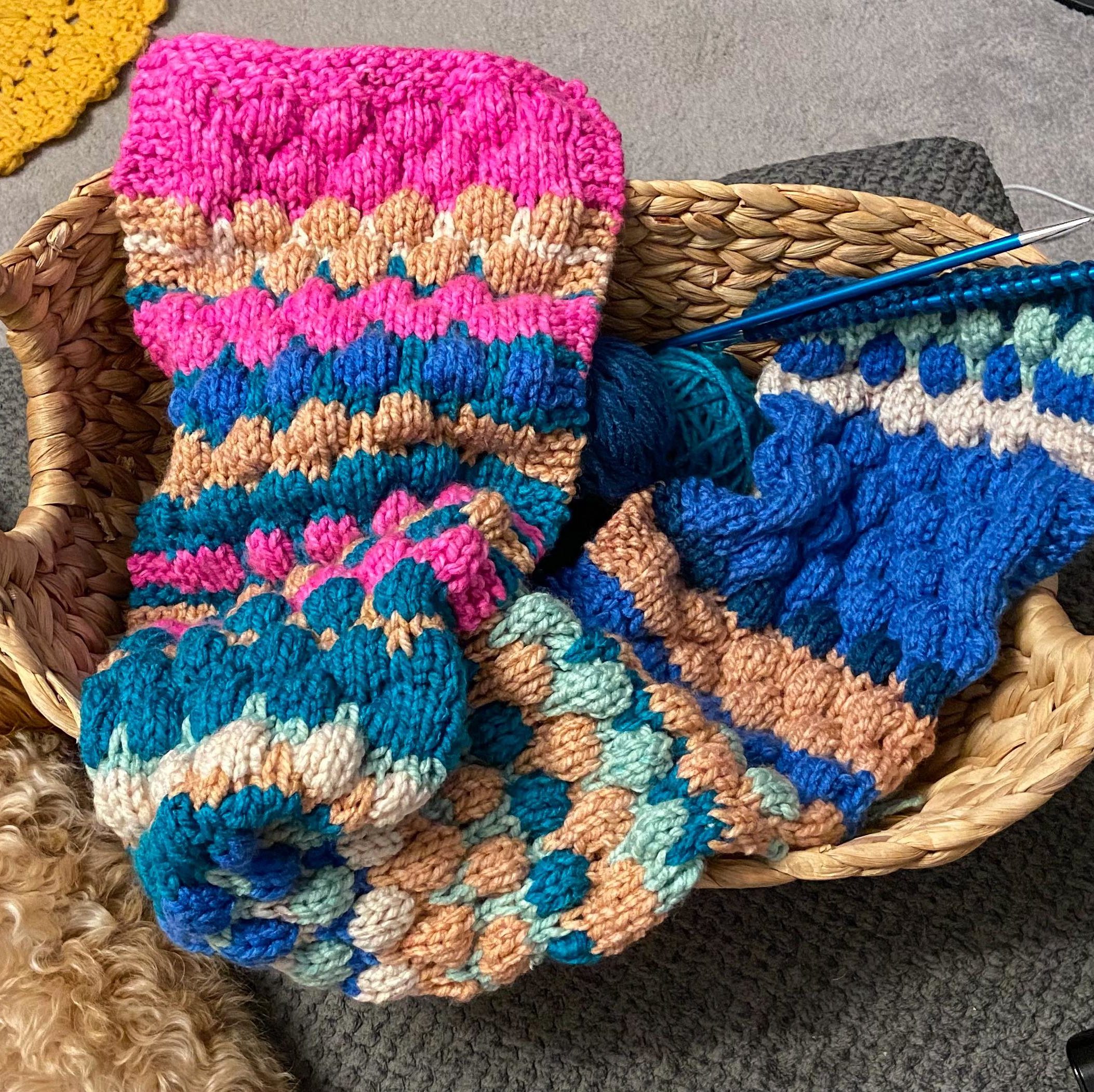

The knit temperature scarf pattern I did is beginner-friendly. It might not look like it initially, but with my help, you’ll have no trouble making this fun scarf!
Tell Me More About The Knit Temperature Scarf
I chose the Tuck Stitch technique using a Blister Check Stitch. The stitch multiple for the Blister Check is 4+1, and it has a 12-row repeat.
The color sequence is 4 rows, change color, 2 rows, change color, 4 rows, change color, 2 rows, change color; then repeat. Working more than just one row for a day’s temperature allows the stitch pattern to really pop and fends off boredom!
➸ Even if the color doesn’t really change for days, the resulting fabric is still interesting and fun!
How Many Days, You Ask?
So, most of you savvy people will notice that Mikey is using 110 days for his blanket, and I used 112 for my scarf. Can you guess why?
No, it is not because I am so extra. LOL.
The reason is that in each 12-row sequence there are 4 days, so having a day count that is divisible by 4 makes for the beginning and the end of the scarf match 🙂
Can I Change The Size of My Temperature Project SAL?
To help with the curling (and to have a place to easily weave in the ends), I added a 3-stitch garter on each side of the scarf. If you want to add more, you can.
As a matter of fact, if you want to make your piece larger or smaller or adjust the stitch count for your preferred gauge, you can! All you need to do is add or subtract 4 stitches from the body of the scarf (if you maintain the garter stitches on the outside).
What about that +1, well, if you are using the numbers already given in the pattern then the +1 has already been accounted for, so you only have to add 4 to increase or decrease between the markers.
Where do I get the Knit Temperature Scarf and Crochet Blanket Pattern?
Don’t worry, there is a pattern! There’s an entire workbook that Mikey put together! It is wonderful, and you get both the Knit Temperature Scarf, the Crochet Temperature Blanket, Tips for working a Temperature Blanket, a Worksheet to plan out your own numbers, and a worksheet to plan your colors!
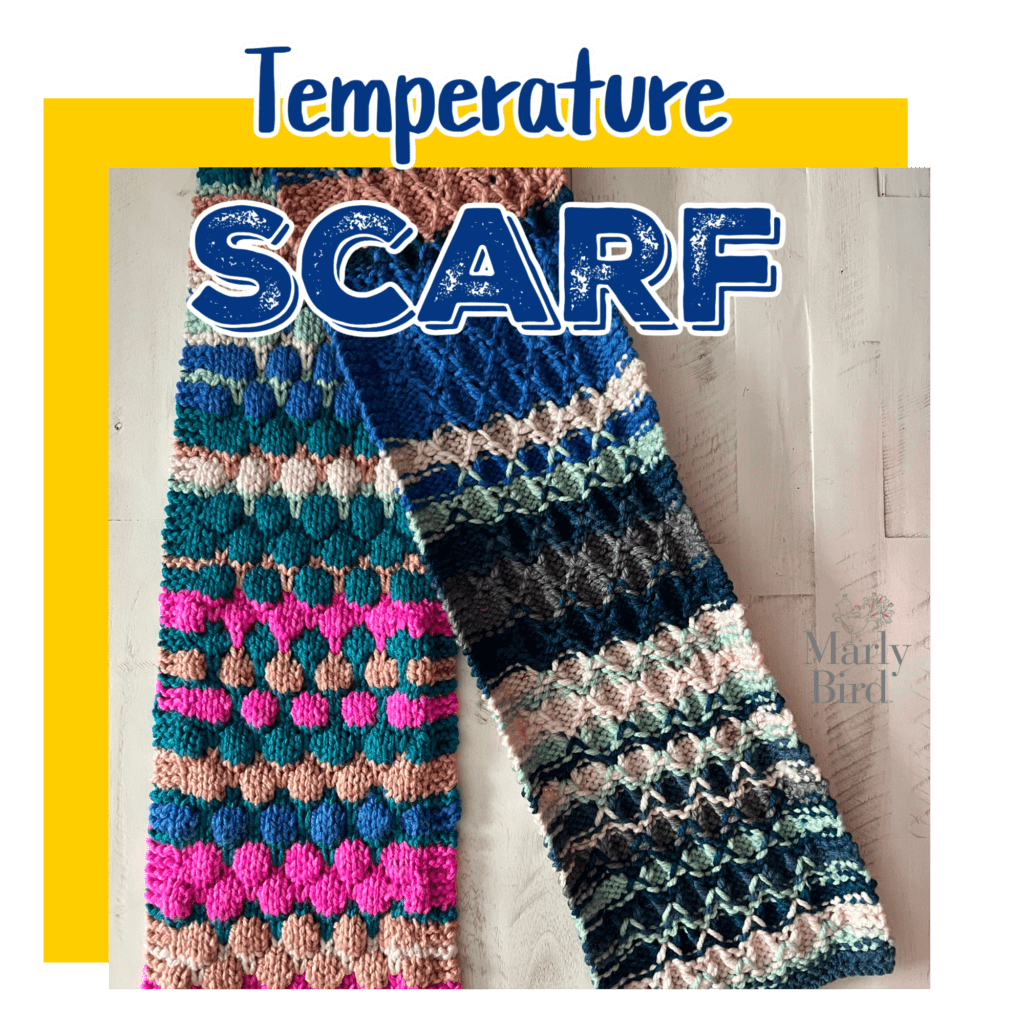

Let’s Actually Do This Together
Starting a completing a big project builds self-esteem. Doing it in the community through a Temperature Project SAL builds connections. Let’s actually do this together in a way that really works for all of us!
Starting September 1, 2022 through December 22nd, join Mikey and I as we work on these fun projects together.
Now, I have to ask…”Have you ever actually completed a temperature blanket?“
I’d love to see it! Share it in the Marly‘s Minions Facebook group or tag me on Instagram @themarlybird.
Are You Part of Camp Colorwork?
First, if you don’t know what Camp Colorwork is, please check it out, as IT’S AMAZING!
Second, I’ve added a new module to the Camp Colorwork Course for the Knit Temperature Scarf pattern. In that module, you’ll find a PDF for the knit scarf pattern and any and all video tutorials specific to the pattern.
Sure, this is a free pattern for everybody, but that doesn’t mean I can’t add it to the carefully curated collection of colorwork patterns inside this amazing course!
Categories: Crochet, Free Patterns, Knitting, Make-Alongs, Our Free Patterns, Pattern

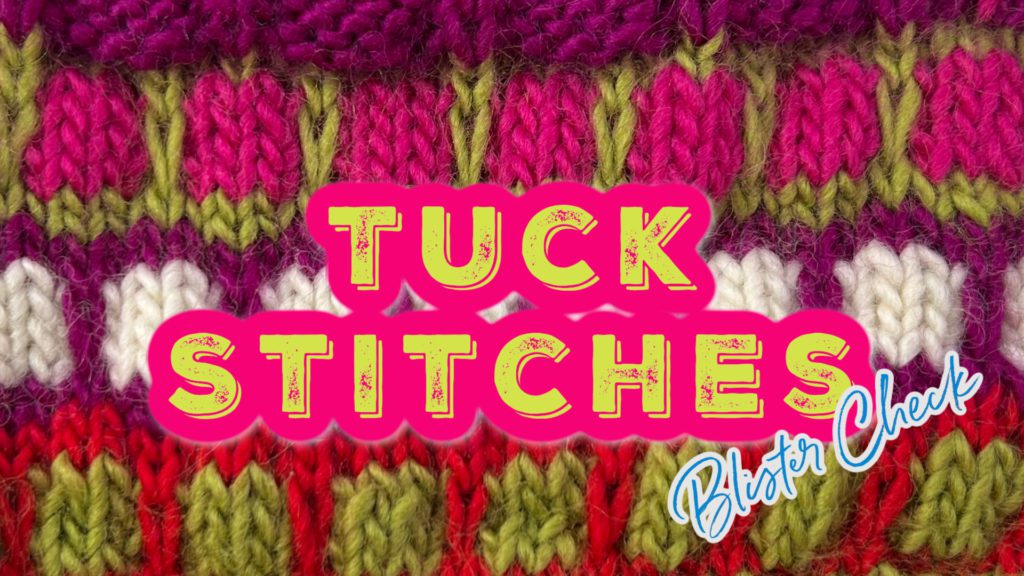
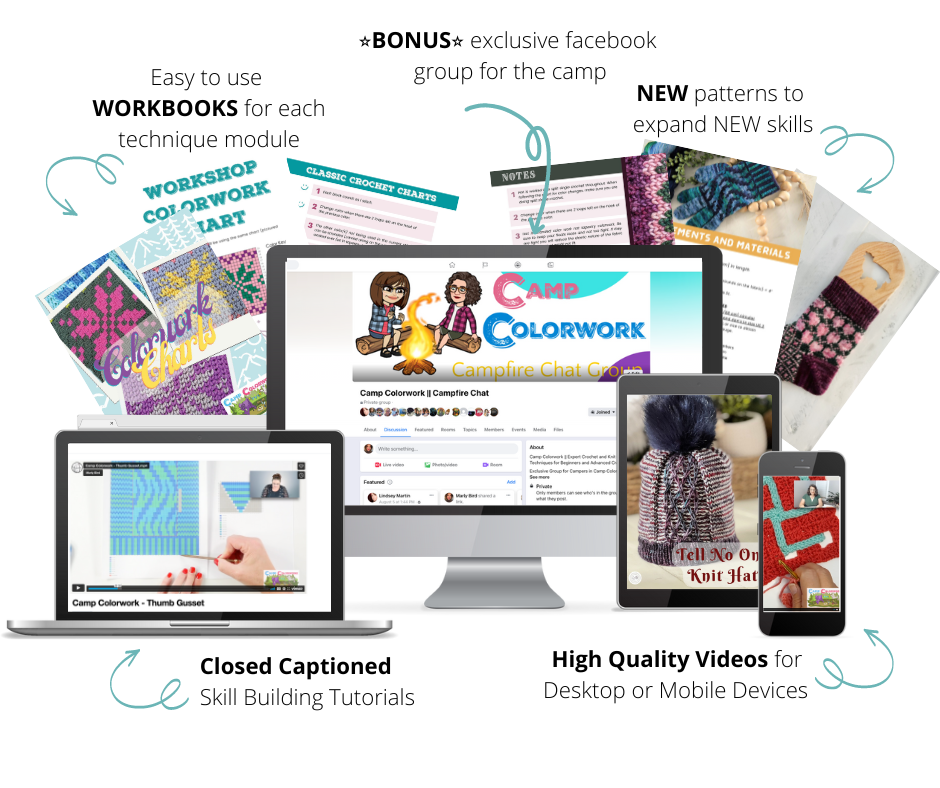

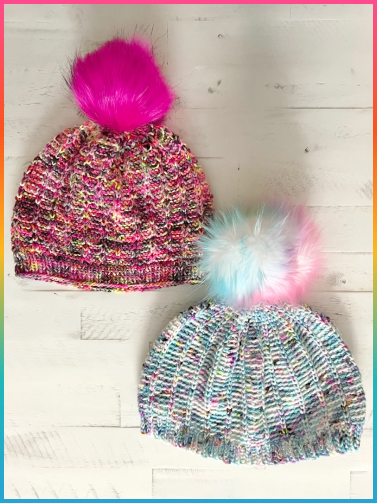

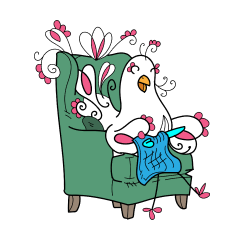
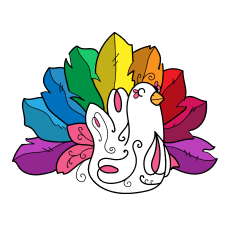
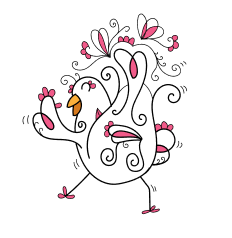
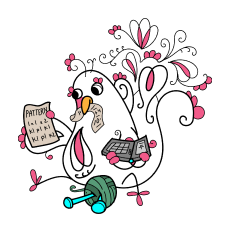
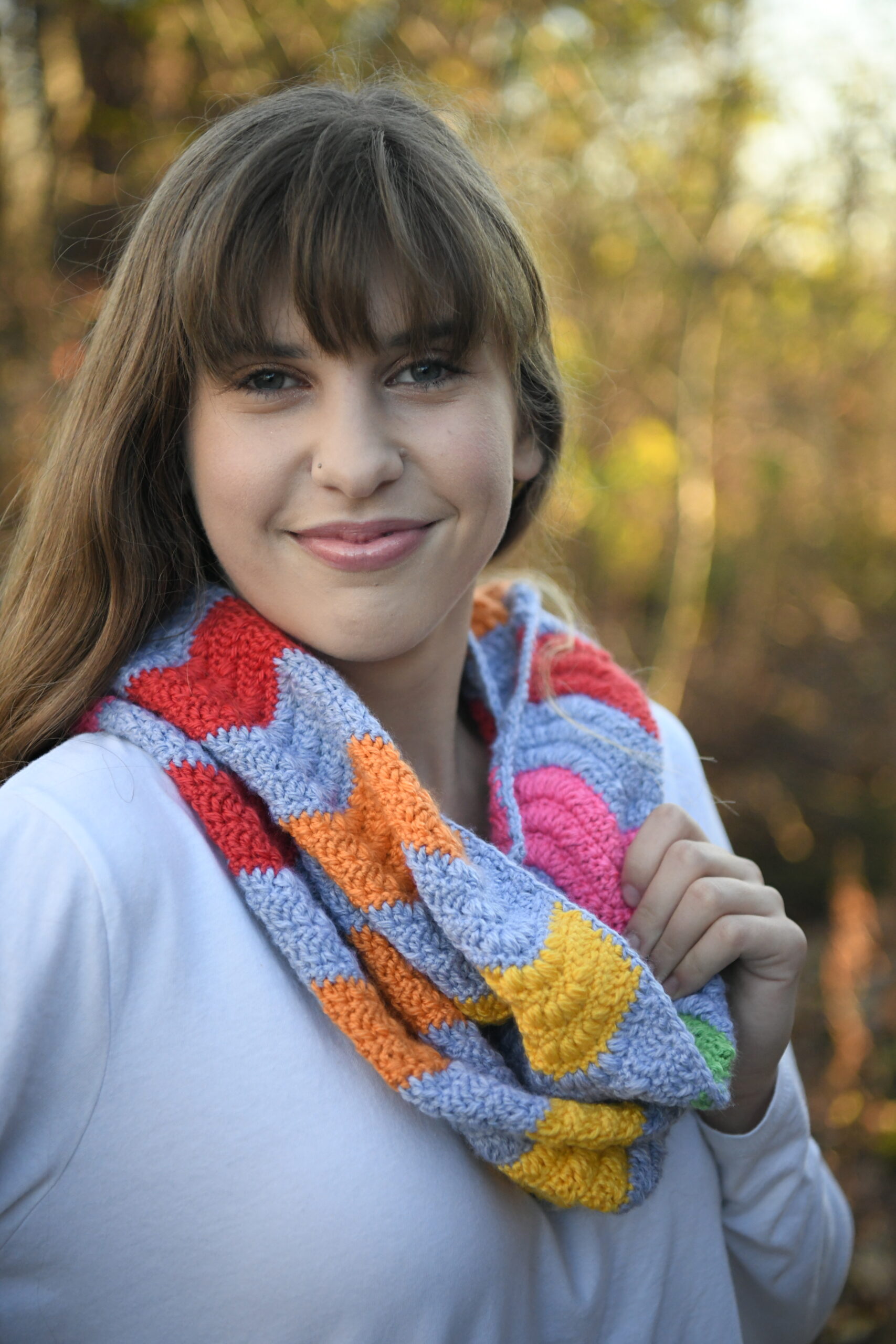
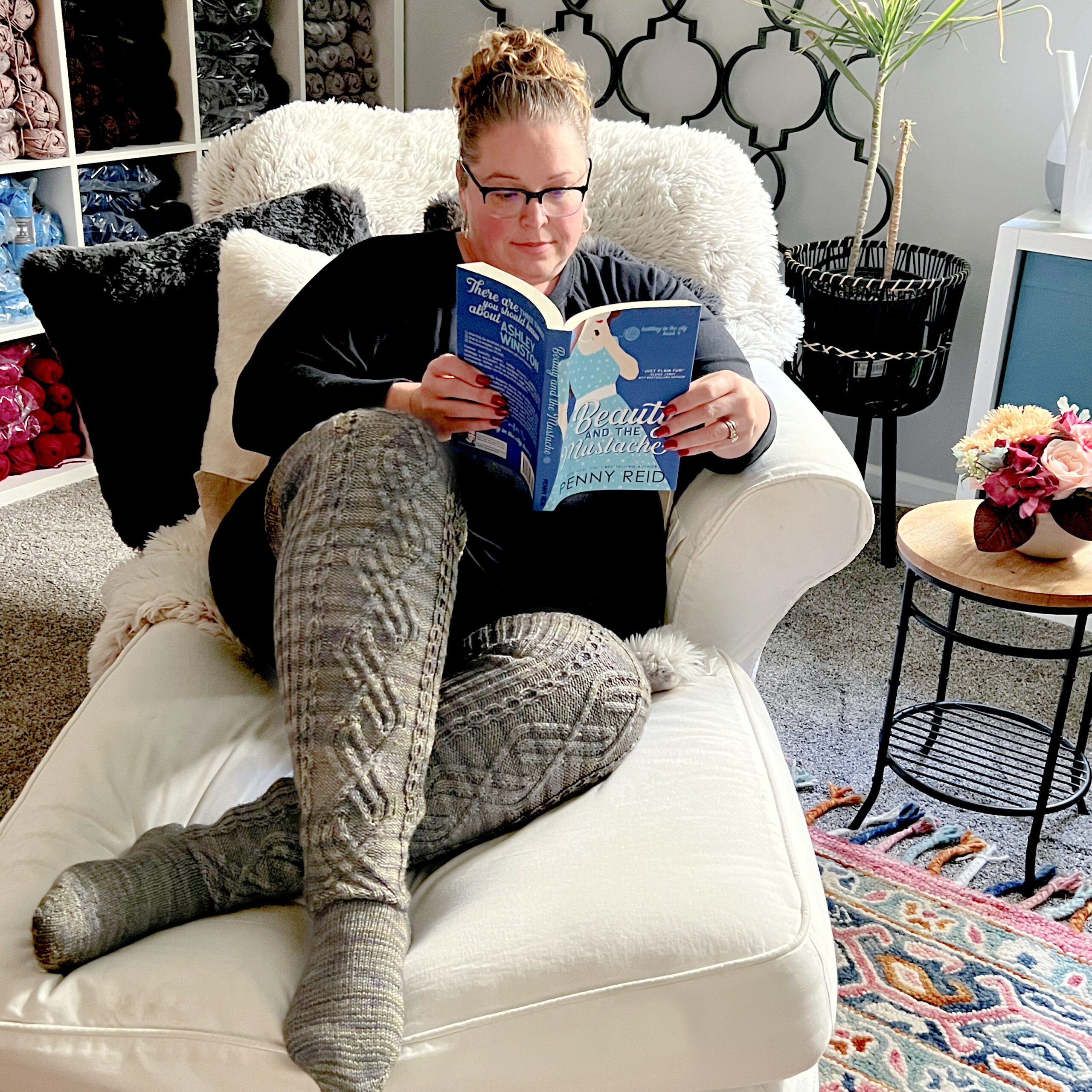
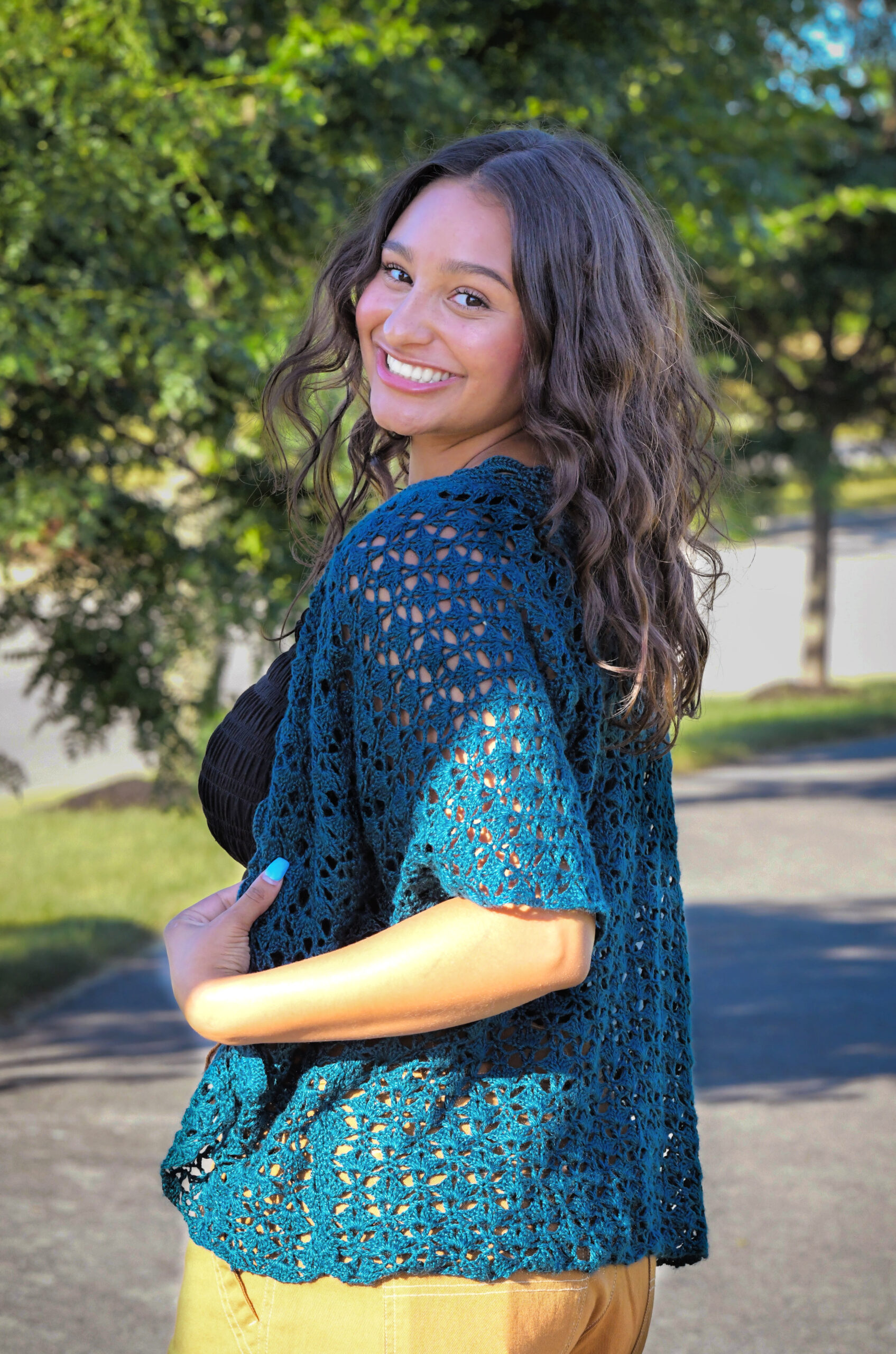
I have never completed a temperature anything, and I’ve always felt badly about it. I feel much better after reading this article. I now know that I am not alone :).